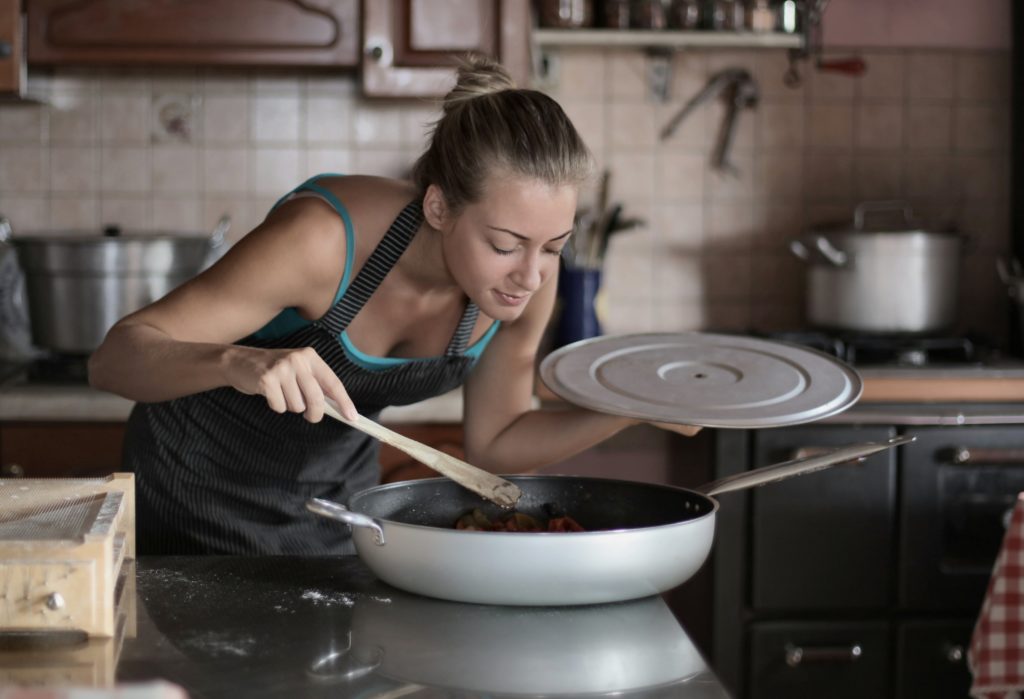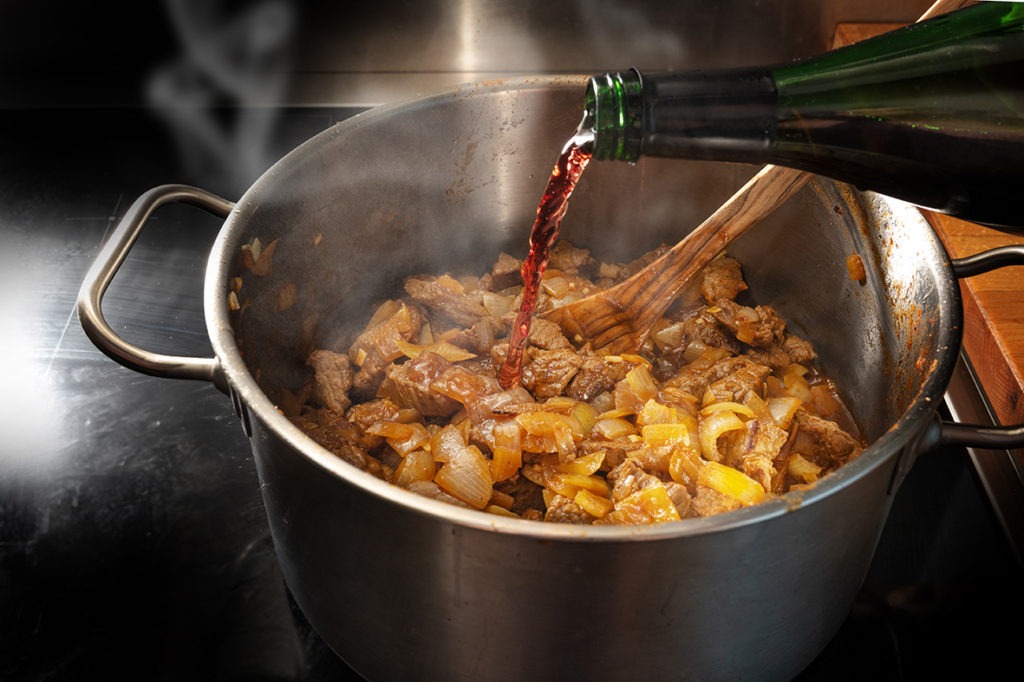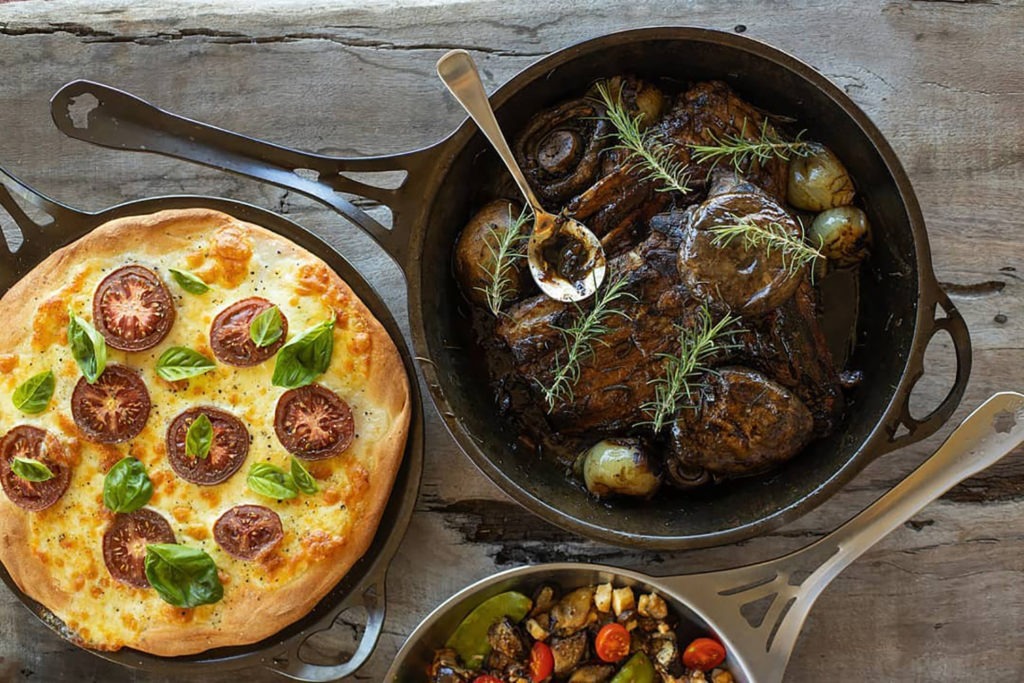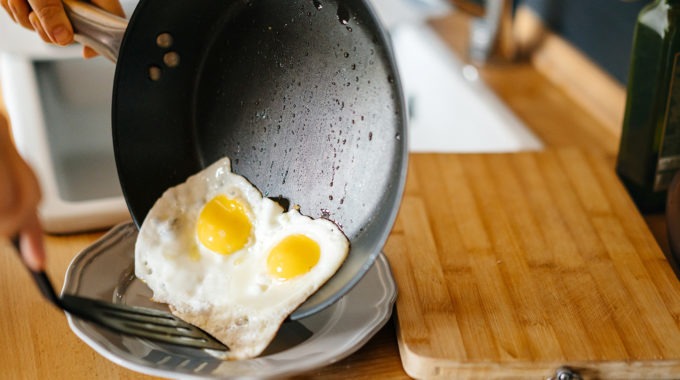Is it time to give non-stick pans the slip?
It turns out that non-stick cookware can have some serious sticking power. While you might enjoy that easy-to-clean slippery surface, the synthetic chemicals commonly used in non-stick pans can have lingering effects in our bodies and – with the short lifespan of non-stick pans leading to most ending up in landfill after a few years – our environment.
Teflon is probably the best-known non-stick brand name. This was invented by global chemical giant DuPont back in the 1930s. It was hugely popular at the time, as it stopped food from sticking to cookware, removing the need to scrub pots and pans after cooking. But in 2005, the American Environmental Protection Agency discovered the potential cancer-causing chemical used in its production. Because of this, the use of this chemical – known as PFOA – was phased out in non-stick pans by 2013. But the problems caused by PFOA continued to stick, with thousands of lawsuits against DuPont persisting for years. The chemical and the company even featured in the 2019 US film Dark Waters.

While PFOA is no longer used, non-stick pans can still contain similar chemicals, known as PFAS chemicals. Sometimes referred to as “forever chemicals” because of how long they can hang around, PFAS can accumulate over time – both in the environment and in the human body. PFAS are now found in our water supply and the bodies of almost all humans in developed countries. It takes up to five years for concentrations of some PFAS chemicals to drop by half in the body, according to the US Centers for Disease Control and Prevention.

A slippery slope
According to consumer watchdog Choice, PFAS have been linked to various health problems, including endocrine effects such as altered thyroid and sex hormone levels, low birth weights and reproductive disorders. In another Hollywood connection, Erin Brockovich – the young lawyer made famous in the eponymous film – has campaigned against PFAS in the US. She was even involved in an Australian lawsuit that involved tens of thousands of people suing the Australian government over PFAS contamination of their land. This came from the use of firefighting foam that contained PFAS chemicals.
Many companies are phasing out the use of PFAS (they can also be found in upholstery, carpets, pizza boxes and cosmetics). But you should always try to look for cookware that is PFAS-free. If you have older non-stick pans and you’re not sure about the coating, only use it at low temperatures, use oils with lower smoke points and don’t scratch or scrub at the surface. If the surface starts the crack or peel, you should toss it.

Buy, dispose, repeat… or stick to a different option
The problem with tossing those old non-stick pans is not just about potential health risks. Synthetic-coated non-stick cookware generally has a short lifespan. This means more than a million non-stick pans are ending up in our landfills every year. And those “forever chemicals” in the coatings never break down in the environment.
And although it might mean a little more washing up, a little sticking can do wonders for your cooking. Adherence of food to the pan will actually make the end result taste better. Those browned bits stuck to the bottom are known as “fond”. This builds up on the bottom of a pan when you’re roasting meats and vegetables. It’s used for deglazing to create flavourful sauces and gravies. It’s virtually impossible to develop this on non-stick cookware. However, it’s easy on iron and steel cookware – which is the cookware of choice for chefs.
Luckily there are plenty of healthy, sustainable, non-toxic and natural cookware options available in Australia. The engineers at sustainable cookware company Solidteknics Australia have compiled a list of how different types of cookware stack up.
Solidteknics has developed two ranges of innovative world-first cookware: Aus-ION wrought iron (formed low-carbon steel) and nöni ferritic wrought stainless cookware. Australian-made, they’re non-toxic and can last for generations.

Season your pan like a pro
In this case, “seasoning” has nothing to do with salt and pepper. By seasoning pans like Solidteknics’ Aus-ION range (the nöni range doesn’t need seasoning) you can achieve a natural non-stick surface that’s forever renewable. Seasoning is simply layers of oil that are baked onto the pan through a process called polymerisation. Over time, this builds to form a natural, healthy, easy-release cooking surface that only continues to get better with use. So, the more you cook with your pan, the more seasoned it becomes.
Cooks all over the world have been seasoning iron pans for centuries. It was the norm before the introduction of non-stick pans. A well-seasoned pan can give you a restaurant-quality sear on meat. It also means you need less oil, which equals healthier cooking.
It’s up to you how much seasoning you choose to do. Some people like to spend a bit of time initially to create a non-stick surface to begin with. Others prefer the no-fuss approach of letting it build up naturally through cooking over time. Your seasoning will constantly change depending on what and how you’re cooking. And while seasoned pans might look a little patchy, remember that quality cookware shouldn’t be about looks. It should be about performance, durability and the end result – delicious food.
To check out the full Solidteknics range, head to solidteknics.com









